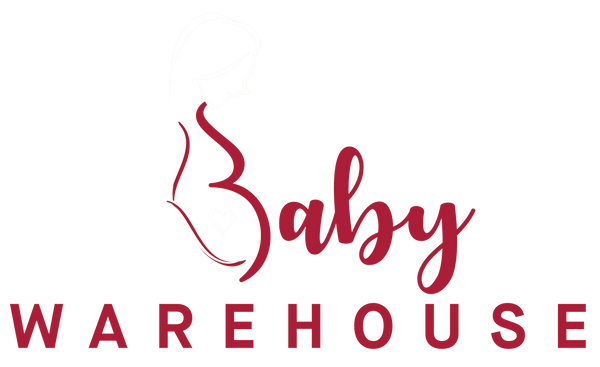
10 HIDDEN HEALTH HAZARDS IN YOUR HOME
Share
Listed below are some hazards for babies to watch out for. After reading this article, you can prevent baby injuries in the home. Posted by Luisa Colón from Parents Magazine. Image courtesy of redpepper82 via Bigstockphoto.
Some of the most serious hazards aren’t outdoors—they’re hiding in plain sight in even the most safety-minded households. Learn which unexpected items are risky, and take steps to avoid an accident.
1. Clothing Hampers
A child who’s looking to create an impromptu tunnel or fort may find that the soft, springy design of these wire-framed hampers fits the bill. But they should be off-limits to kids: They’ve caused severe eye injuries. “Our patients’ eyes were cut open when the hamper wire came loose from the fabric. They required emergency surgery,” says Iris Kassem, M.D., Ph.D., a pediatric ophthalmologist and assistant professor at Medical College of Wisconsin, in Milwaukee. Check for an interior wire with no protective cover and get rid of the hamper when the fabric starts to fray.
2. Magnets
Household magnets have always been a choking risk. But a different breed of magnet—tiny, high-powered silver-colored balls that can be molded into shapes and are sold as “stress relievers”—can be devastating to kids if they’re ingested. Many brands have been recalled, but that hasn’t solved the problem. When two magnets attract within the digestive system, it’s “like a gunshot wound to the gut, but with no sign of entry or exit,” says Scott Wolfson, communications director at the U.S. Consumer Product Safety Commission (CPSC). A federal safety rule now makes it illegal to make or sell small, powerful, and loose magnet sets. (Toys that use magnets are legal, as long as their label shows they meet the “ASTM” safety standard.) If you suspect your child has ingested a magnet; call your doctor or go to an emergency room, where an X-ray should be performed right away.
3. Detergent Pods
By now we know the dangers: They’re bright, colorful, and look like something sweet that any kid would love to taste. And that’s what happened to Lindsey Davelaar’s daughter in Brooklyn, New York. “I’d put a couple of pods in a snack bag to take with me to the Laundromat,” says the mom of 2-year-old Jasmine, who popped one into her mouth after she found a bag that had accidentally been left out. The capsules contain laundry detergent in concentrated form, and the pod’s fluid burst out when her child bit into the coating. The family spent a full day in the E.R. as Jasmine was monitored for digestive distress, elevated heart rate, and respiratory problems. Thankfully, she ended up being okay.
4. Button Batteries
These batteries, which can be found in everything from toys to wristwatches to hearing aids, aren’t just a choking hazard. “Sometimes the button battery opens up after being ingested,” explains Maria Mercurio-Zappala, associate director of the NYC Poison Control Center. This causes a caustic fluid to leak out and burn the esophagus. If you suspect your child may have ingested a button battery, call your doctor or Poison Control.
5. Hard Candy
A study in Pediatrics has revealed the hard truth: Candy is the most frequent cause of choking in children 14 and under. “A common scenario is a toddler running with hard candy in her mouth, and then starting to choke,” says Parents advisor Gary A. Smith, M.D., director of the Center for Injury Research and Policy at Nationwide Children’s Hospital, in Columbus, Ohio. “All parents should know how to perform appropriate rescue maneuvers such as the Heimlich if a child is choking,” Dr. Smith adds. Never give either hard candy or gum to children ages 4 and younger.
6. Immersion Blenders
These handheld appliances with extremely sharp blades sent 7,261 people to the emergency room in 2011. It’s not just adults who are seriously harmed: The CPSC estimates that 1,250 kids younger than 14 were treated in hospital emergency rooms for injuries related to immersion blenders and electric blenders in 2012 alone, says Wolfson. Because the power button is often located on the side of the device, it can turn on accidentally. So avoid plugging the blender in until you’re holding it properly, and keep it out of your child’s reach.
7. Prescription Drugs
With increasing rates of adults taking prescription medications, there’s also been a rise in young kids being unintentionally poisoned after ingesting these meds. While parents may make a special effort to keep certain drugs, such as sleeping pills, locked away, they often fail to secure meds that don’t seem as dangerous (like those used to treat diabetes, pain, and hypertension) but which actually pose a serious threat to kids. And never assume that you can leave medication out because the packaging is “childproof.” Keep all meds—even vitamins—securely closed and stored up and away out of your child’s reach and sight, and make sure visitors’ handbags are out of reach as well.
8. Falling Televisions
TVs can easily tip over after being placed on furniture such as a desk or a media console. Research has found that a child is treated for a television-related injury every 30 minutes. Some anti-tip tips: Install wall-anchoring devices to prevent TVs (and other furniture) from tipping; they typically cost less than $15. Make sure your TV is on a low, sturdy base and push it as far back as possible—but check to see that it is still anchored to the wall. And if you have a traditional TV set, never place an item on top of it. A child who sees a sippy cup or a remote control up there may try to climb for it, pulling the set down in the process.
9. Spray Bottles
Household cleaners were the cause of injury to almost 300,000 children over a 16-year period, found the Center for Injury Research and Policy, and spray bottles were the most common culprit. Help prevent these accidents by turning the sprayer to the “Off” position, but that’s not enough. “It just slows kids down a little bit,” warns Mercurio-Zappala. Keep all household cleaners out of your child’s reach—ideally in a locked cabinet—and don’t store household cleaners or any toxic substances in recycled containers, such as water bottles, because a child is likely to mistake them for a drink.



